How to teach a dog to command "near"?
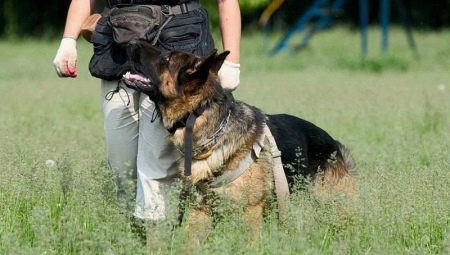
The “side by side” command does not belong to the category of mandatory commands that are included in the basic training course, but it is a valuable skill that will be useful for any dog to master. Knowing the command makes it much easier to manage your pet in public places and reduces the likelihood of negative situations.
Why teach a dog to command?
The need to teach a pet the command "beside" is due to some disciplinary moments. Large animals very often pull on the leash and drag the owner along with them. Especially often young dogs sin with this, which at the sight of another dog or cat begin to behave very restlessly. It often happens that, upon seeing someone from his family on the street, the pet is very happy and, sweeping away everything in its path, rushes to the household.
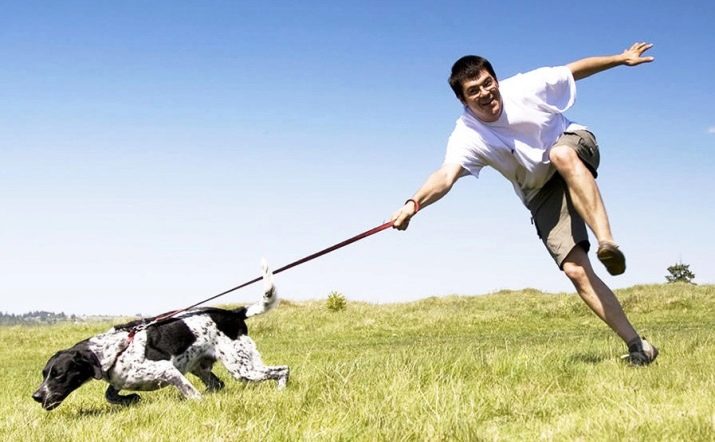
As for dogs of smaller breeds, they often need to master this skill. This is due to the fact that too active pets have a habit of getting underfoot. They can run far ahead, quickly return to the owner and suddenly stop. Such dogs often get entangled in the leash themselves and entangle their owner in it. Therefore, overly active pets, despite their small size, should also be trained in this command.
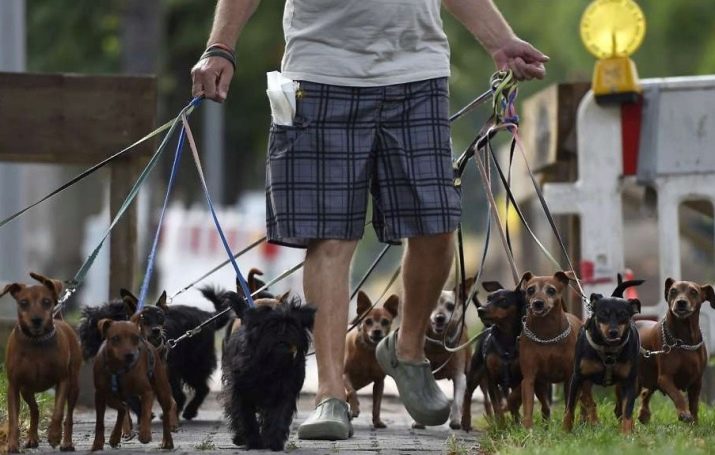
Another reason why the animal needs to know the command "by" is desire to attend exhibitions and other social events with him. When surrounded by other dogs, which often act as irritants, this skill is essential. Besides, knowledge of the command will help the dog to better feel its owner, slow down or speed up the step with him, adapt to it when changing the direction of movement and move safely in areas with active traffic.
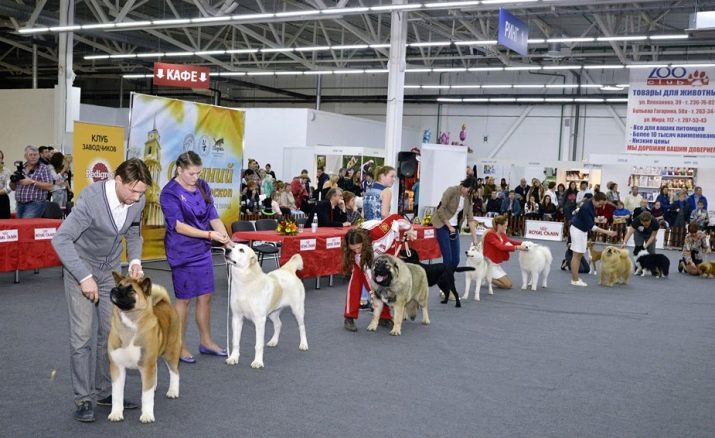
Besides, having mastered the command "near", it will be easier for the dog to learn the adjacent commands - "stand" and "aport", assuming that the pet is in a given location relative to the owner. And the last thing: a dog, sedately walking along the street level with its owner, makes a very favorable impression and looks quite impressive, thereby causing admiration and a sense of security among others.

Execution requirements
From the outside, the command seems quite simple, but in fact, it requires good mental abilities and obedience from the pet.
Moreover, it belongs to the category of the most difficult to master and requires a lot of patience from the owner.
The difficulty of memorizing is due to the fact that a command includes not one, but several sequential actions at once, each of which has its own strict requirements.
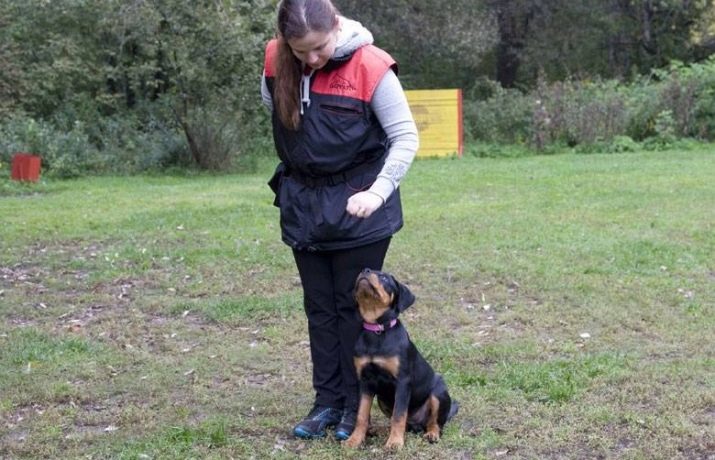
So, having heard the command "near", the dog should immediately run up to the owner, if it is at a distance from him, run around it from the back in a clockwise direction and stand near the left leg. Moreover, the animal's shoulder should be flush with the owner's leg, remaining in this position during movement. The dog can change the position relative to the owner only after the command “walk” is heard and not earlier. Otherwise, the skill can be considered undiscovered, and the command loses its meaning.

Another important requirement for the execution of the command "close" is the observance of the distance by the animal between its body and the owner's leg.
It should be equal to the width of the dog's croup, and the shoulder blades of the animal should be in line with the owner's knees. In this position, the dog will not interfere with the person when walking, but at the same time it will be able to be at a fairly close distance from him. At the initial stage of training, the distance between the owner and the dog can reach 50 cm. However, after the animal clearly learns and begins to execute the command, it is gradually reduced to optimal.
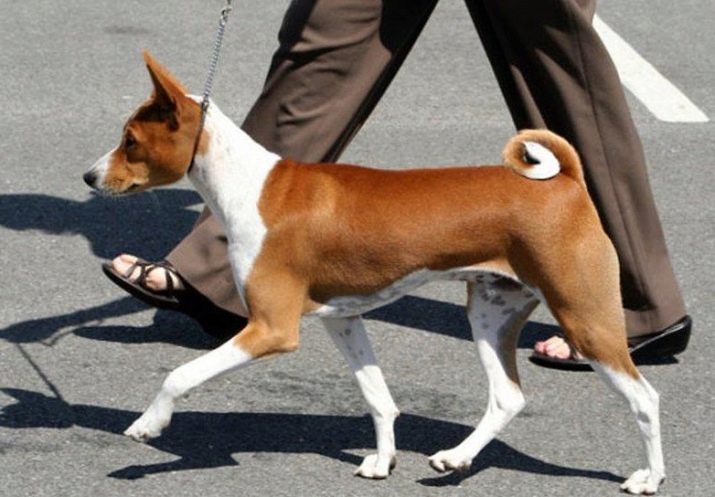
Special requirements apply to the positioning of the pet's head. It should be straight or slightly raised in order to keep the owner's face in sight. To correct the position of the head and accustom the pet to it, you can use a special harness.

The next important point is the behavior of the dog during the stops of the owner. In this case, the animal must also immediately stop and sit down without waiting for a special invitation or gesture. This position must be maintained by the dog until otherwise instructed by the owner. If a person wants to turn around its axis, the pet must also turn around, go around it from behind and sit down again.

As can be seen from the requirements, the command “near” requires complex and multi-stage actions from the dog, and therefore not all pets are able to perform exactly all the moments.
Therefore, if the dog will not take part in exhibitions and other public events or is not a service dog, then this skill can be simplified a little.
For example, you should not require him to accurately maintain a distance and adopt a sitting position during stops. In addition, if the owner of the dog is left-handed, then you can train the animal to be on the right side. The main thing is that the dog grasps the general meaning of the command and flawlessly fulfills the main points, without going into the intricacies of the process.
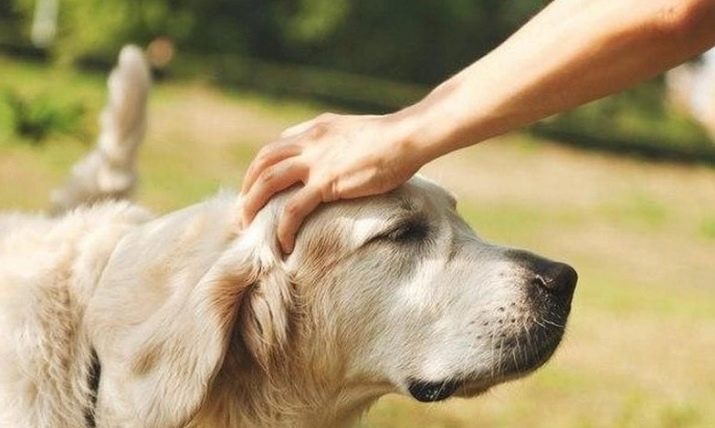
When can I start learning?
Professional trainers are sure that it is very difficult to accustom an adult dog to the command “near”. That's why teaching the puppy this skill should be started as early as possible, at about the age of 6-7 months... This is due to the formation of conditioned reflexes, which are especially well fixed starting from 6 months of age.
Unfortunately, it will not work to teach a very small puppy to execute this command, so you need to be patient and wait until the pet grows up.
This is due to the fact that the training of the team “near” is carried out according to the classical scheme of reward / punishment, and too small a puppy is not yet ready for this.
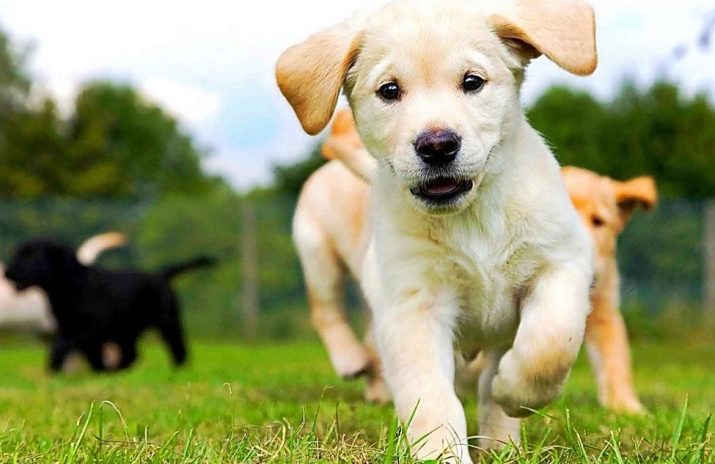
Summarizing what has been said, it is worth noting that it is impossible to give an unambiguous answer to this question, since the start time of training depends on the breed of the pet, its temperament and mental abilities, as well as on the owner's experience in raising dogs. At the beginning of the training, it is not recommended to overload the puppy with this command, and therefore you can spend 10 minutes working on this skill in one training session. As the dog grows older, the time is gradually increased and brought up to 20 minutes.
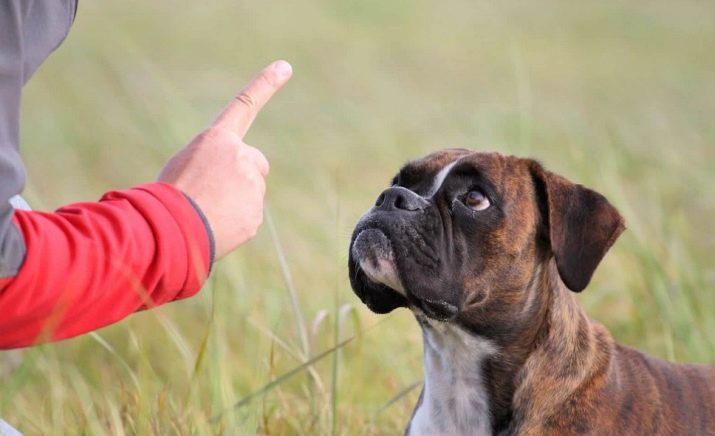
Training methods
You can train the dog to command "beside" both with the help of a professional trainer, and independently. However, in the latter case, it is necessary to familiarize yourself with the peculiarities of the character of the representatives of the breed and soberly assess the ability of your pet to learn.
They begin to practice skills not earlier than the moment when the dog learns to walk on a leash and finally recognizes the unconditional leadership of the owner.
Training should be carried out in a quiet, uncrowded place with a minimum of irritating factors.such as people, cars, other animals. The dog should be focused only on the owner and not be distracted by the sides. In addition, the animal must be on a leash, and representatives of large breeds must be on a jerk chain.
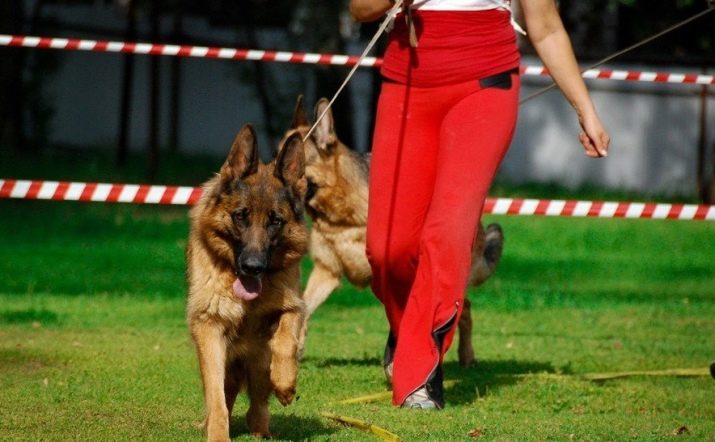
The attitude of the owner is also important: he must be in a calm mood and be serious. Immediately before training with the puppy, you need to take a good walk so that during classes you will not be distracted to meet your natural needs. Moreover, if you start teaching your pet at the beginning of the walk, then he will experience psychological discomfort and wonder why, instead of playing and running, he is forced to do something unknown. Therefore, the final 15 minutes of walking will be the ideal time to practice this skill.
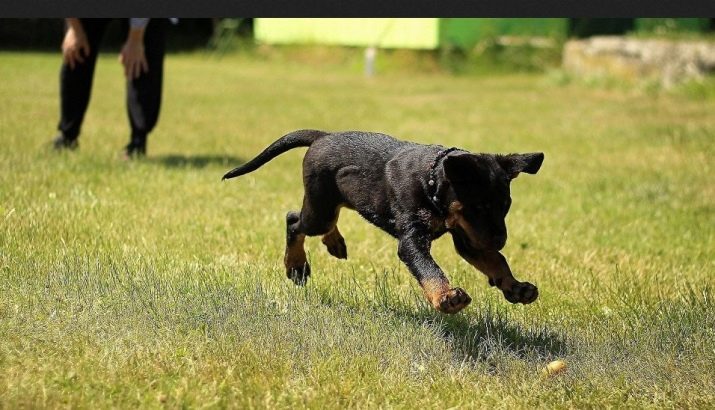
It is possible to teach a dog to understand and execute the command "beside" both with the help of food, and by pushing with a leash.
The first method is used to train puppies or large adult dogs, and the animals are not fed before the walk. As a result, a logical chain "command - correct action - food" is formed in the pet, and the conditioned reflex is consolidated. To use this method, a piece of delicacy is held in the hand and moved along the path the dog should follow. This method is called "Guidance", since the pet continuously monitors the movements of the hand and thus aims at the target. After each correctly performed action, a piece of food is fed to the animal, and the dog himself is awarded praise.
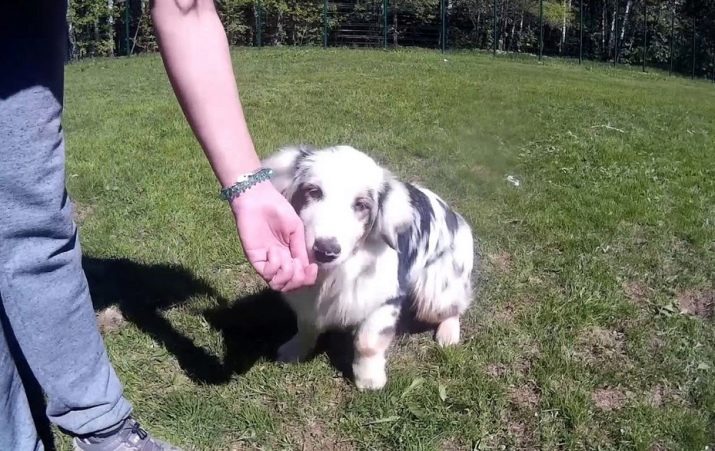
Trainers recommend sharing team training in several stages.
- So, on the first of them, the pet must learn to occupy the desired location on command, bypassing the owner from behind.
- On the second, the task is somewhat complicated and they achieve synchronous movement from the dog with the owner. In this case, the periods between tasty rewards are slightly increased, not forgetting to cheer and praise the puppy after each correctly performed action.
- In the third stage, the dog must master running in a straight line at an average pace, following the delicacy clutched in the owner's left hand.
- After she starts to do it well, move on to working out turns, turns, a sharp change in pace and a complete stop.
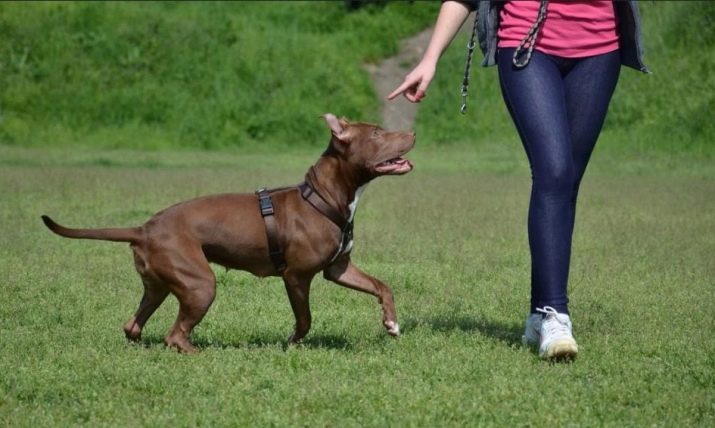
The second method is known as the "pushing technique" and relies on the animal's self-preservation instinct. To practice skills in this case, they use not a treat, but a leash jerk. The animal quickly realizes that jerking movements cause it significant discomfort, the only salvation from which is to follow closely with the owner.
Keep in mind when executing a command using this method. that the jerk should be quite noticeable, but not cause unbearable pain to the pet. Otherwise, the dog can behave inappropriately, and sometimes very aggressive.
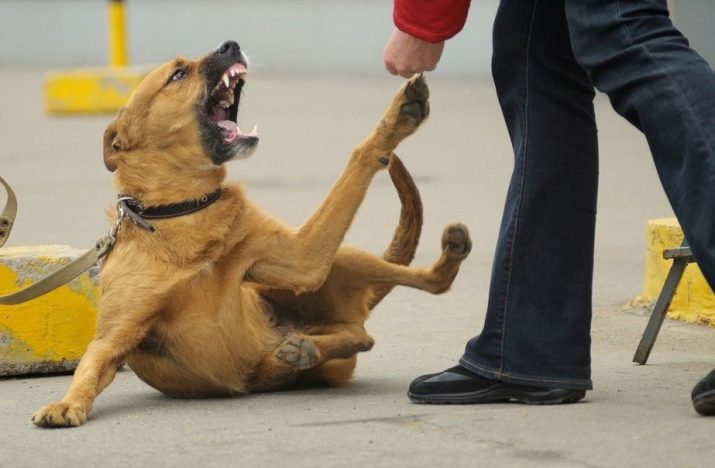
In general, the training scheme for this method is as follows: giving command - change of position - jerk. It should be noted here that it is precisely a jerk upward or to the side that is necessary, and not pulling the leash along the trajectory of the dog's movement. Only in this case the dog will understand that he is doing something wrong. A simple pull-up on the leash will provoke more resistance and an even stronger tension on the leash. If the action is performed correctly, the jerk is replaced with an approval.
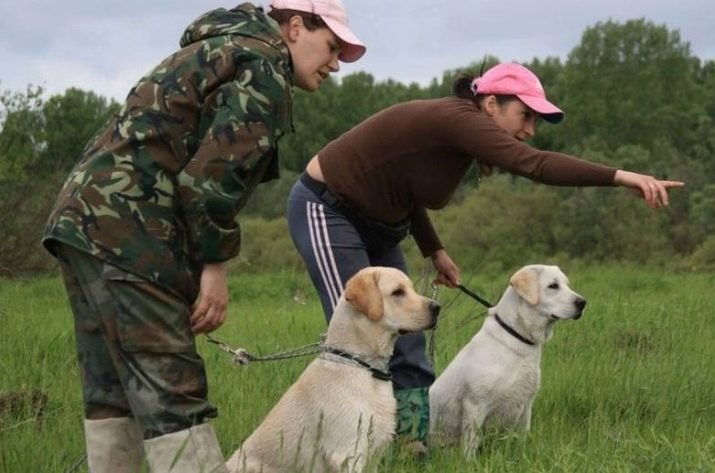
As a reward, they give a treat and stroke the dog. When implementing this technique, it should be remembered that a jerk should never precede a command, otherwise the animal will become disoriented and will not understand what is wanted from it. In the process of practicing the skill, the leash is left in a sagging state, since in a taut form it signals a possible jerk and keeps the dog in tension.
After the animal has fully mastered the command, you can move on to practicing the skill without a leash.
To do this, use a leash with a length of 3 to 5 meters and command "walk". After the dog runs back a certain distance, they give the command "to me", and as soon as the dog runs up, the command "near" sounds. After the animal learns to follow the command well, running up from a long distance, you can proceed to the final stage of training - practicing the skill without a leash. If the dog refuses to approach and carry out the command, they return to a long leash, and if it does everything impeccably, to consolidate the skill, they treat them to a treat and say words of approval.
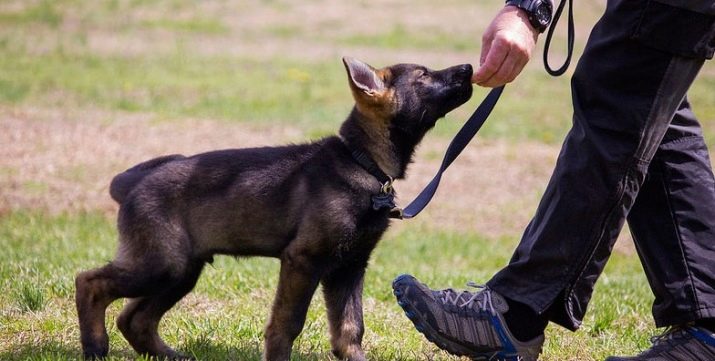
Frequent trainer mistakes
When training a command “near”, novice dog breeders make a lot of mistakes that can discourage the animals from any desire to practice. Below are the most common ones.
- Walking the pet on a tight leash, because of what the jerk ceases to be something out of the ordinary for the animal.
- Pronouncing a command with an angry or even worse - threatening intonation. The dog will decide that it is guilty and will begin to associate the command with punishment.
- Rapid and frequent changes in speed and direction able to disorient even the smartest dog.
- Frequent and unjustified abuse of the team.
- Poor retention of the skill and an accelerated transition to a more difficult stage.
- Performing a Strong Dash before uttering the command.
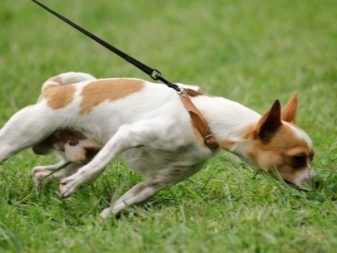
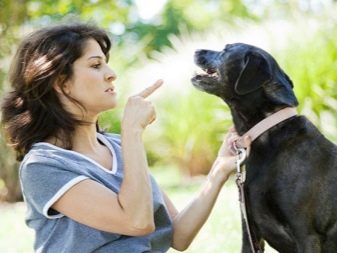
The following video will show you how to teach your dog to walk side by side in 2 sessions of 20 minutes.






































